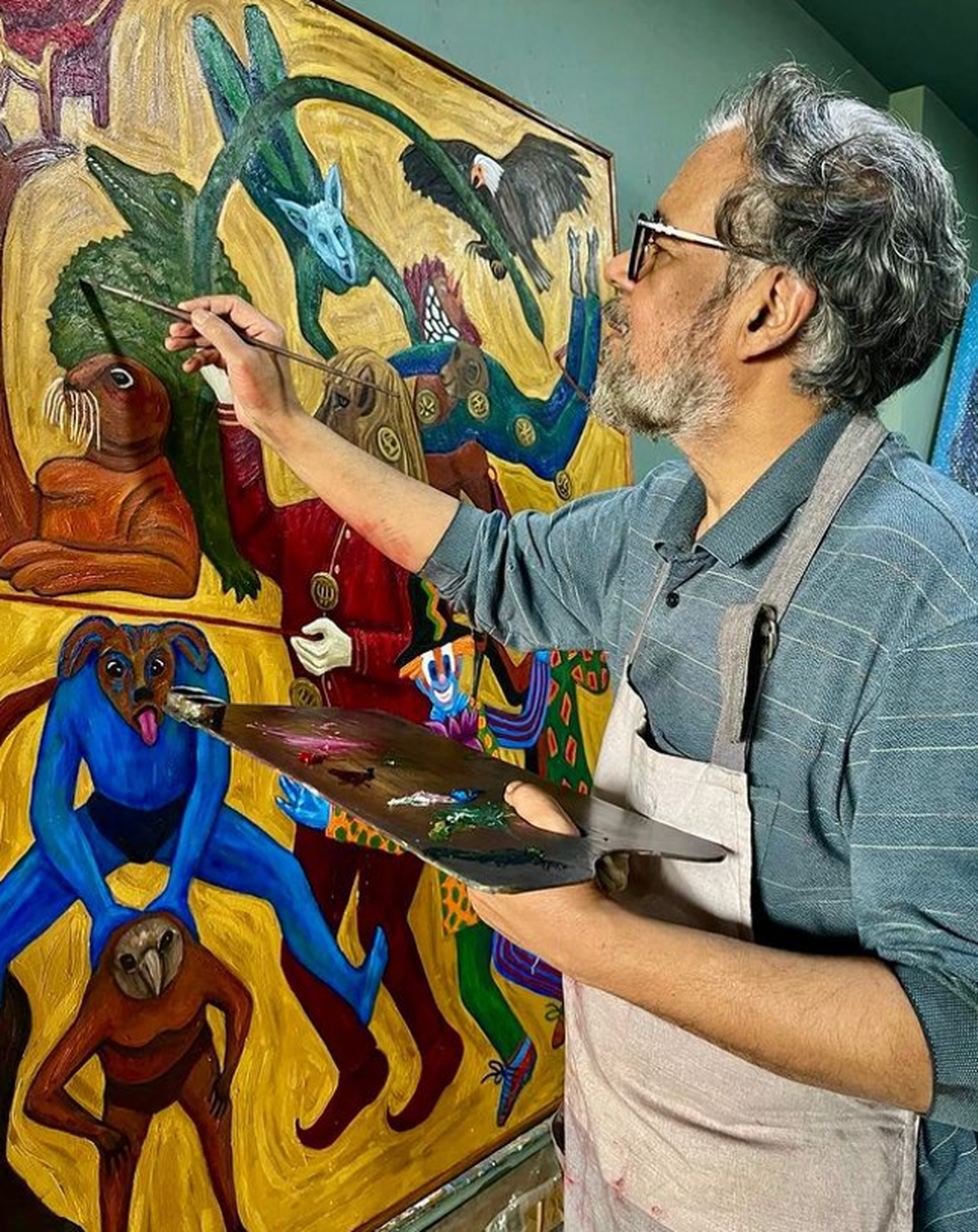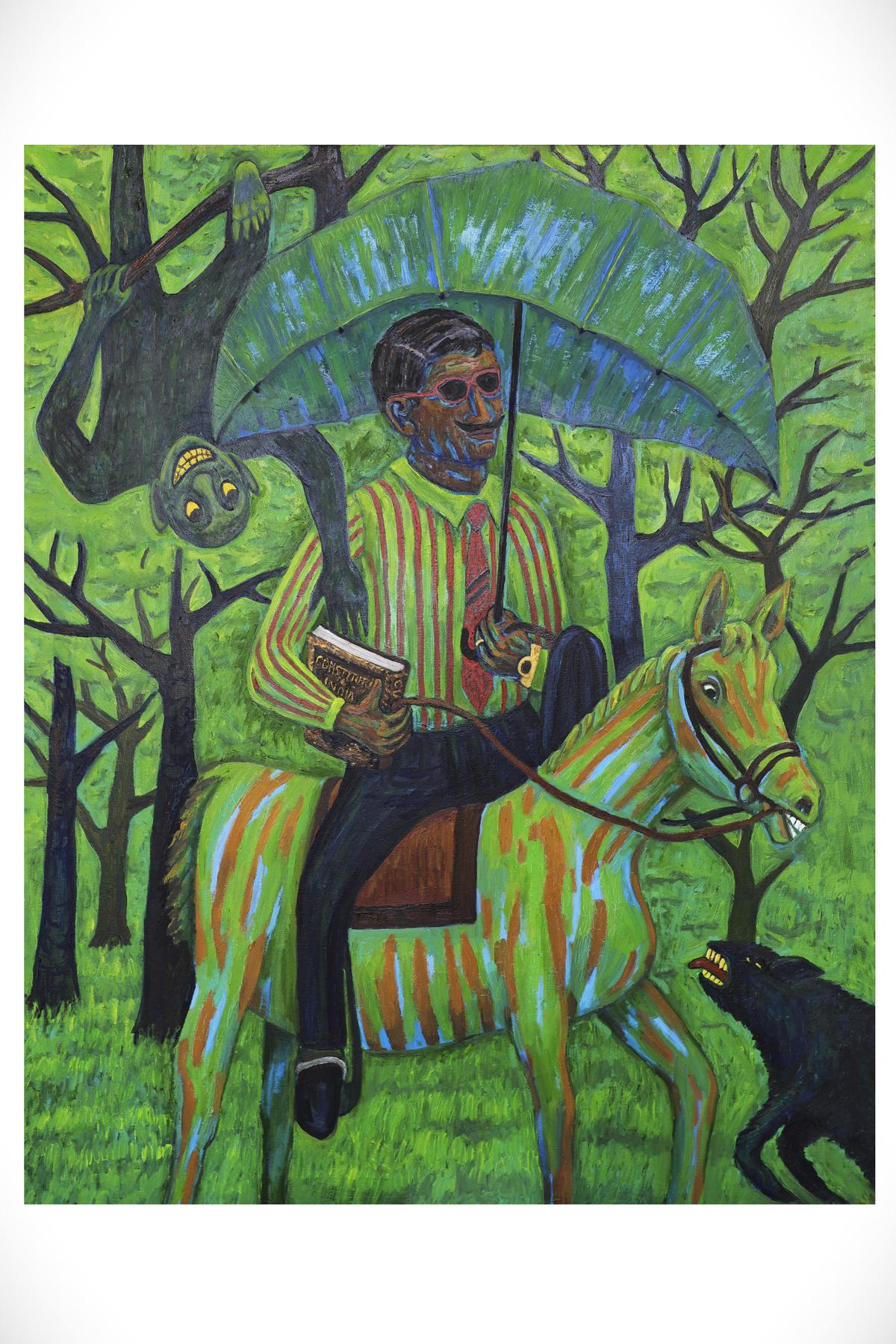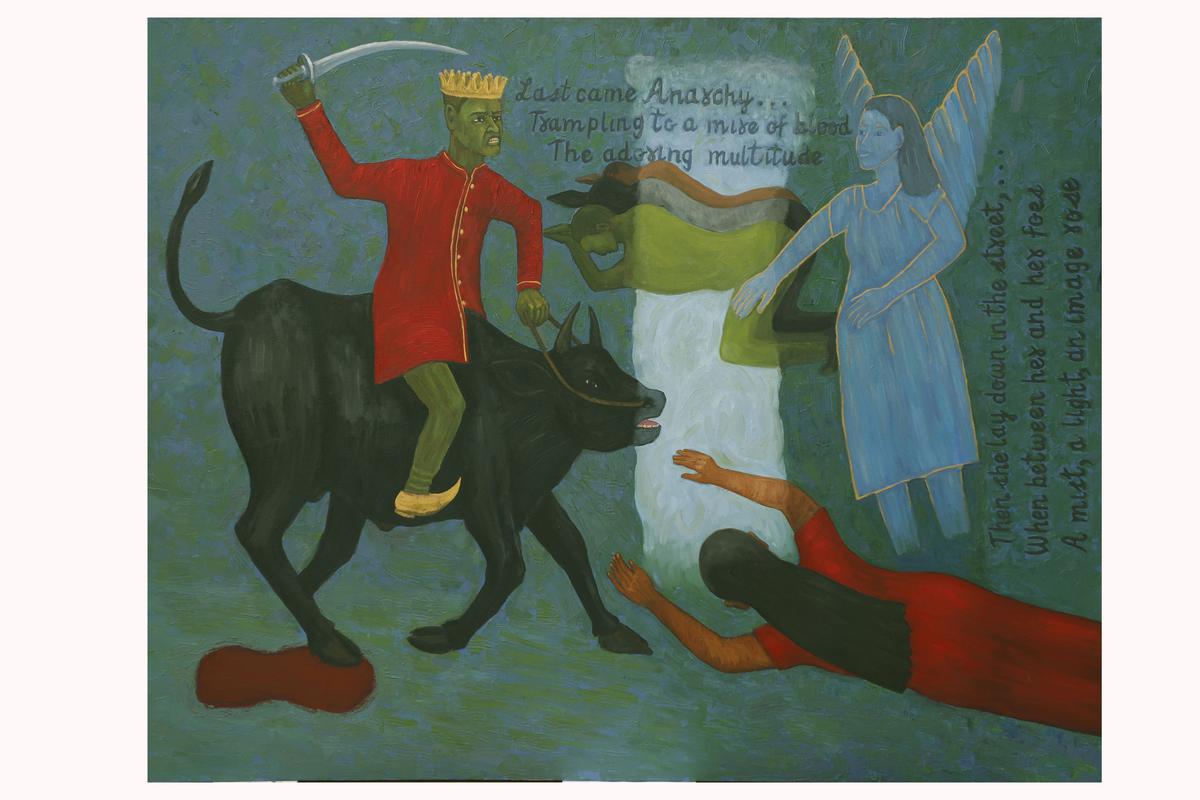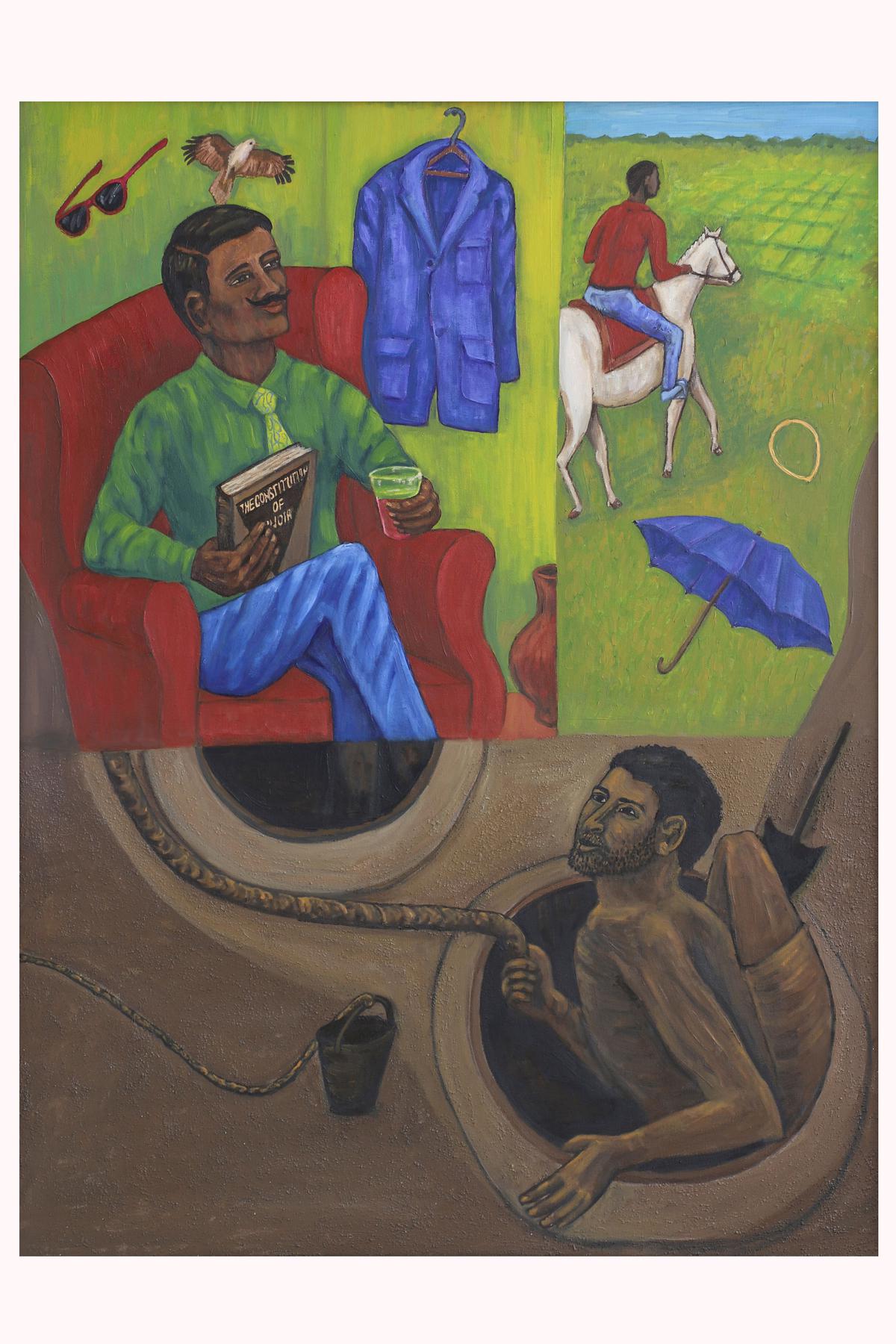[ad_1]
Ranjan Kaul’s 2023 painting Phake Neuj is a highly effective demonstration of the kind of ‘suspended animation’ great art leaves the viewer with. Here, a bespectacled senior citizen (the glasses are a psychological trick, to imbue the subject with ‘trustworthiness’) is reading a newspaper called ‘Phake Neuj’. A friend of his is peeking into the paper curiously — signalling the inevitable spread of falsehoods. A third figure, of whom we can only see their legs, has put their feet as they consume the latest IPL match, ignoring the “breaking news” chyron at the bottom of the screen. There’s so much going on here that works as a straightforward indictment of India’s media ecosystem and yet, the overall effect is that of an urgent whisper in the dark. This rather striking work is indicative of the artist’s ability to discuss serious issues with a light touch.
Phake Neuj is part of Within, Without, Kaul’s fifth solo exhibition, currently on display at Delhi’s Visual Arts Gallery, at the India Habitat Centre. Curated by artist and art critic Georgina Maddox, the show brings together works from the last six years that reflect “the complexities of contemporary times”. While the emphasis is on issues pertaining to Indian society, even the standalone works have a strong sense of narrative, crafting a story around an Indian socio-political theme.
“Hybrid identities have always fascinated me. I am born to a Kashmiri father and a Marathi mother, so I too have a hybrid identity of sorts,” Kaul says, during a video interview. “I am primarily a figurative artist. So, if you see my paintings like Myrmidons and others, I have used human-animal hybrid figures to present my point of view.” The painting he is referring to is a watercolour he made in 2018, that is also part of the exhibition.

Artist Ranjan Kaul
In Homer’s Iliad, the Myrmidons were the tribe of warriors commanded by Achilles. The charisma and God-like status of their leader meant that they are now associated with the idea of ‘blind following’. In Kaul’s painting, we see a Pied Piper-like figure with an animal-head leading a group of man-sheep hybrids into violence, their blades raised aloft in anticipation of bloodshed.
Drawing on Shelley
Literature and literary references are never far away from Kaul’s work. A writer himself, his published works include a novel, Through the Forest Darkly (2012, Hachette India) and a short story collection, Silent Realities (2016, Niyogi Books).

Main To Raste Se Ja Raha Tha, oil on canvas
“I have all but stopped writing fiction, although I still maintain a blog where I write about art. Sometimes, I think of my paintings as self-sufficient short stories,” he says, speaking about his literary career and how it informs his artwork. “They explore one idea in detail and that way, across an exhibition I am able to talk about several different things, express myself in several different media.”
To that end, Within, Without includes a series of five works inspired by the works of the Romantic poet Percy Shelley. Like Hope Confronts Anarchy (2022, oil on canvas), which is in conversation with Shelley’s poem ‘The Masque of Anarchy’, written in 1819 following the infamous Peterloo massacre, where peaceful working-class British protestors were charged upon by the cavalry. It’s considered to be one of the first major British literary works to advocate for the principle of non-violent resistance. “It’s not a particularly well-known Shelley poem, but I like it because it has a sense of social justice, a sense of purpose.”

Hope Confronts Anarchy, oil on canvas
Another thematic sequence that stands out is Daydreams, a bifurcated oil-on-canvas painting from 2022, the two halves of which depict the dreams and the reality of a Dalit man. The dream images are aspirational — he sees himself well-dressed, sitting on a comfortable, high-backed chair, reading the Constitution of India. Whereas, in the reality part of the painting, he is cleaning a manhole — shamefully, manual scavenging has not yet been eliminated from the country and it’s mostly Dalit men that are saddled with the odious practice.

Daydreams, oil on canvas
Dissecting society
Now in his late 60s, Kaul has led a full and diverse life. An engineer by education, he graduated from IIT Kanpur in the 70s, before completing a master’s in English literature from Delhi University and postgraduate studies in product design from IIT Bombay. He was also managing director of Oxford University Press India before he quit to pursue art full-time.
This diversity of life experiences lends itself to his unusual and moving depictions of some of Indian society’s most pressing issues. “It’s not always the things that are in front of our eyes that deserve our full attention,” Kaul says. “This show is also about issues that escape the public eye, that are invisible for many reasons. That’s where art comes in, and that’s what I am trying to do with my work — make people feel strongly about things that might have otherwise passed them by.”
On display at the India Habitat Centre till March 31. From April 12-22, the exhibition will move to Urban Fringe at Okhla Industrial Estate.
The writer and journalist is working on his first book of non-fiction.
[ad_2]
Source link




